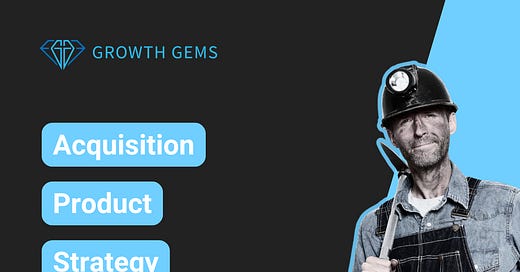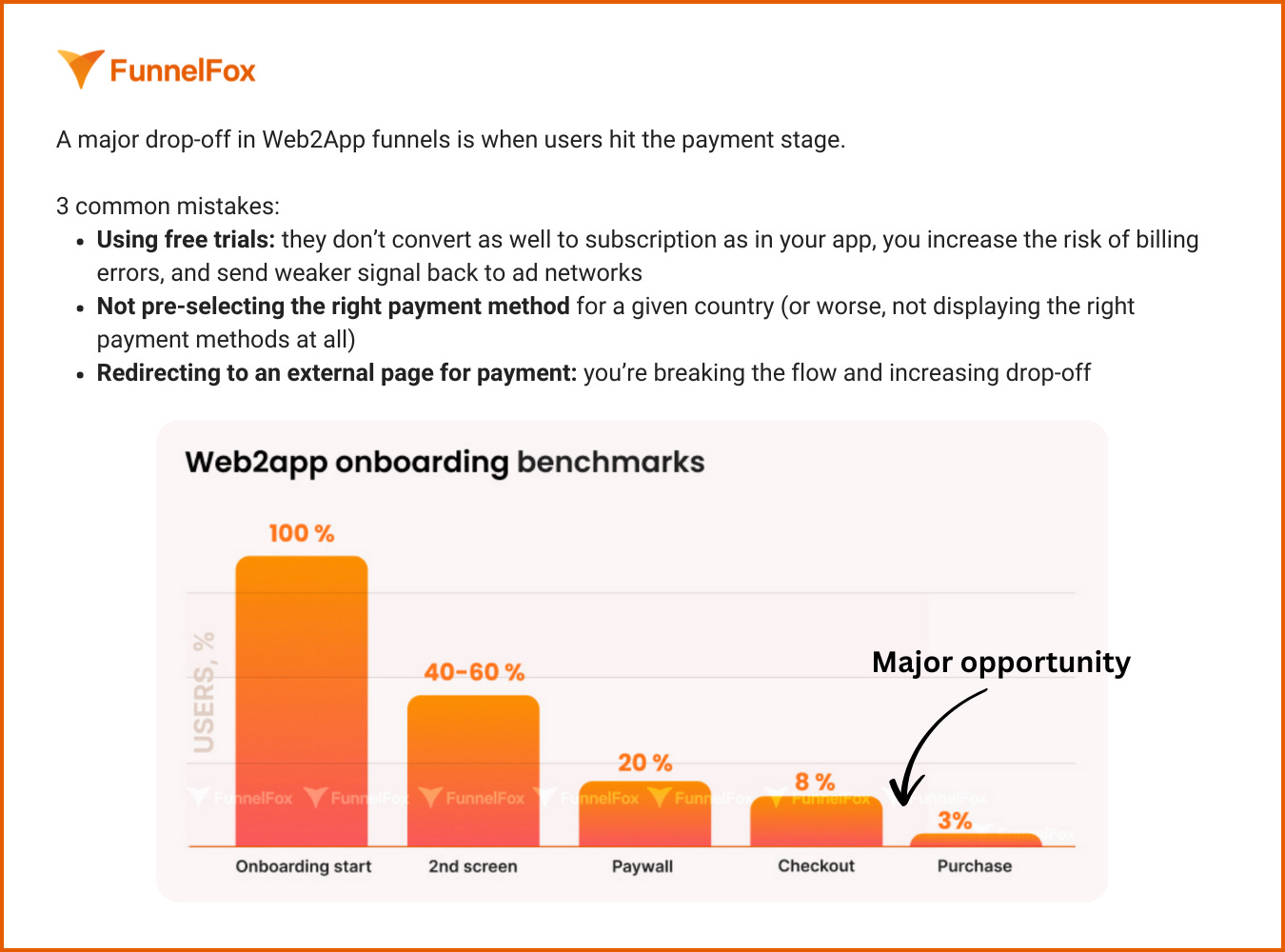💎 Growth Gems #123 - Acquisition, Product and Strategy
Gems from Michael Giardino (CEO at Oleve - Quizard, Unstuck) in Oleve's Michael Giardino: Distribution by NewForm E06
Hi, fellow growth practitioner!
I never stopped mining growth insights…So I decided to start sharing these gems 💎 from videos and podcast episodes again!
This week, I’m bringing you insights on acquisition, monetization, and strategy.
I hope these insights from Michael Giardino will be valuable.
🥇 TOP GEM OF THE WEEK
Oleve’s products generate $6M ARR with 5 employees. Not a bad ratio!
Michael shares the journey behind building viral consumer apps and his app-holding company.
Some good takes on marketing/growth and strategically thinking about product. It’s the most relevant if you’re early stage, but could shift your perspective even if you work for bigger apps (or you’re a publisher with a portfolio of apps).
SPONSORED INSIGHT & RESOURCE
There’s been lots of talks about web-based funnels the last couple of years.
You should obsess over onboarding and getting people to the paywall…But too many don’t pay enough attention to their payment setup and their checkout experience.
This can make or break your purchase rate.
If you think you might be in that case (I use to think nothing could convert better than a default Stripe checkout!), you need to go through FunnelFox’s Guide to Web Funnel Payments.
It’s free. Time to add a few payment-related experiments to your backlog!
stage: early / growth
💎 Consider weekly subscriptions instead of monthly ones, and don't be afraid to increase your pricing. This approach can significantly boost your recurring revenue by optimizing for higher frequency payments and capturing more of your users' willingness to pay.
(13:26)
stage: early
💎 For early-stage app marketing, even simple screen recordings showing your product's core value can drive viral growth on TikTok, especially when you position the product at the intersection of trending technologies or brands that users already understand and love.
(13:48)
stage: early / growth / scaled
💎 Create visually distinctive products/features that stand out from competitors to drive growth. When users see something that looks fundamentally different from what they're used to, they're more likely to share it and engage with it.
(14:19)
Below some app examples of this (sharing shorts but check out TikTok for more).
Touch grass
Focus Tree
Visually distinctive features can be leveraged in organic and influencer marketing as well as paid ads. If something visual and valuable exists directly in your onboarding quiz then it can actually become how you get users in. Examples:
Rise with Sleep Debt and Energy Levels info
Elevate with EPQ score
If your app or onboarding don’t directly have something like this, you can still build a dedicated experience that’s highly visual. A great example of this is BoldVoice’s Accent Oracle (here is a TikTok video showcasing it).
stage: early
💎 When selecting markets to enter, prioritize those with both high user LTV and effective distribution channels. Fitness is particularly valuable because users have high willingness to pay and the influencer ecosystem provides powerful distribution where followers deeply trust recommendations.
(23:55)
stage: early / growth / scaled
💎 Focus on building 'wedge companies' rather than just wedge products - businesses that can quickly establish a foothold in a market through a narrow entry point, then expand from that position of strength. The current environment of fast development cycles and novel AI features makes this strategy particularly effective.
(35:05)
stage: early
💎 When evaluating market opportunities, carefully consider inherent retention limitations. In markets like EdTech, natural constraints (such as 25% of students graduating annually) create hard ceilings on retention metrics that will impact your long-term growth potential regardless of product quality.
(38:50)
stage: early / growth / scaled
💎 Create a structured market validation process with predefined metrics, launch strategy, iteration limits, and clear decision points. This framework should include both kill conditions for failures and scaling plans for successes, including how to efficiently maintain cash cow products with offshore resources.
(41:11)
This reminded me from the approach described by Warren Woodward (CGO at Upptic) in Cracking Games Growth: Revealing the Upptic Playbook. Find all the insights in Growth Gems #104 👇
See you next time.
Stay curious!
— Sylvain
Chief Insights Miner at Growth Gems ⛏️
(Fractional) Head of Growth at Reading.com
Growth Consultant/Advisor for high-potential subscription apps (hit reply if you want to chat - bonus if you’re in Education, Meditation & Cooking categories)
🔗 Source:








